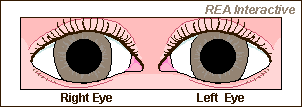
HIPPUS PUPIL REGISTRATION
Trial registration: This systematic review has been registered in the international prospective register of systematic reviews (PROSPERO) under the registration number: CRD42022285044.Įxamining individual differences in pupil size and pupillary dynamics have revealed important insights into the nature of individual differences in cognitive abilities like working memory capacity, long-term memory, attention control, and fluid intelligence. Finally, we suggest some possible confounders to be considered, and outstanding questions that need to be addressed, to answer this fundamental question. Overall, we show that there is, at best, inconclusive evidence for an effect of breathing on pupil dynamics in humans. Breathing route was not investigated by any of the included studies. The effect of breathing depth and breathing rate (6 and 20 studies respectively) were rated as "very low". The effect of breathing phase on pupil dynamics was rated as "low" (6 studies). The study findings were summarized in a descriptive manner, and the strength of the evidence for each parameter was estimated following the Grading of Recommendations Assessment, Development, and Evaluation (GRADE) approach. Thirty-one studies were included in the final analyses, and their quality was assessed with QualSyst. We followed the Preferred Reporting Items for Systematic Reviews and Meta-Analyses (PRISMA) guidelines, and conducted a systematic search of the scientific literature databases MEDLINE, Web of Science, and PsycInfo in November 2021. We assessed the effect of breathing phase, depth, rate, and route (nose/mouth).

We therefore conducted a systematic review of the literature on how breathing affects pupil dynamics in humans. However, there has been no attempt at synthesizing the progress on this topic since. This widespread idea is also the general understanding currently. More than 50 years ago, it was proposed that breathing shapes pupil dynamics. Childhood would thus be characterized by a high autonomic tone, possibly reflecting a physiological state compatible with developmental acquisitions.

Our results converged towards higher SNS and PNS tones in children compared to adults. Finally, children displayed a larger median pupil diameter and a higher pupillary hippus frequency than adults. Children also produced more spontaneous EDA peaks, reflected in a larger EDA AUC (area under the curve), in comparison with adults. Children exhibited lower RR intervals, higher LF peak frequencies, and lower LF/HF (low frequency/high frequency) ratios compared to adults. We recorded simultaneously pupil diameter, electrodermal activity (EDA) and cardiac activity (RR interval and HRV: heart rate variability) in 29 children (6-12 years old) and 30 adults (20-42 years old) during a 5-min rest period.

We aimed to arrive at a better understanding of the maturation of the sympathetic (SNS) and parasympathetic (PNS) tonus by comparing children and adults at rest, via recordings of multiple ANS indices. Considering the suspected involvement of the autonomic nervous system (ANS) in several neurodevelopmental disorders, a description of its tonus in typical populations and of its maturation between childhood and adulthood is necessary.


 0 kommentar(er)
0 kommentar(er)
